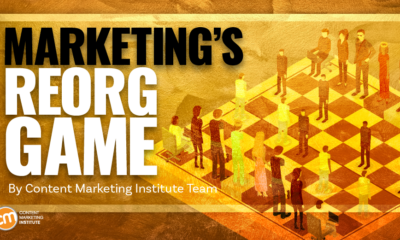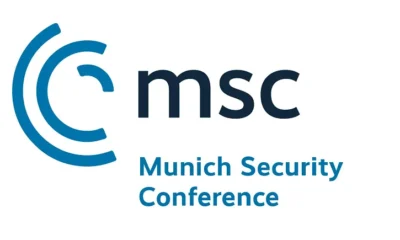SEO
Legal Considerations & Team Communication For Remote Companies

So, you’ve likely figured out that remote work is here to stay, which means a whole set of different considerations when getting set up.
In the first part of this series on how to build a remote SEO team, we looked into the structure of successful remote teams.
Now, let’s explore the legal considerations and team communication aspects you’ll need to build a remote team, stay compliant, and encourage collaboration.
Legal Aspects of Remote SEO Teams
Salary and benefits are not the only aspects of hiring fully-remote SEO experts with legal implications.
Depending on your team’s base, you may need to make extra considerations around rights and security.
Data Security
Employees working fully remotely may not only be working from their homes.
They may use the flexibility of not being in an office to take working holidays for weeks at a time or simply go to the coffee shop down the road to work.
Because of this, there are extra data security complications.
Confidential Data
In an ideal situation, each team member would have their own private, lockable space to work.
An office outside of the company office.
However, this is a rarity.
Therefore, remote workers must be mindful of who can access their working space or see what they are working on.
Working in a co-working space or a café can mean that other people may see screens with confidential client data or company financial data.
You may need to invest in films for laptop screens that make it harder for other people to read unless directly in front of them.
You may also need to recommend that your team be mindful of the data they leave visible on their screens around other people.
Data Protection Laws
It might not just be a case of wanting to keep client and personal data safe. There might be legal ramifications if you don’t.
In Europe, for example, the General Data Protection Regulation (GDPR) governs employees and stipulates how to treat personally identifiable data.
You’ll need to adapt processes and rules around data security to life outside of the office for remote teams.
The team also needs to be educated on its importance and have the tools to assess their own work environment.
Guidance For Shared Living Spaces
Working full-time from home can lead to lapses in treating work equipment and data differently from personal equipment.
It might be second nature for an employee in an office to lock their laptop when they get up from their desk. But in the comfort and security of their own homes, it might not occur to them to do the same.
Think too, that in an office, most people around work for the same company.
This is not the case in shared living spaces.
It can be a good idea to remind your team of that.
Guidance For Vacated Premises
Hybrid or in-office employees may leave their laptops at work when they go on holiday.
The office is likely to be staffed when they are not there, or in periods of shutdown such as over bank holidays, the office will be securely locked.
There may be times when a colleague’s house, therefore home office, is completely vacant, like when they and their family go on holiday.
Remote workers may need to lock away their company laptops during these times as an extra level of security.
You may need to provide them with the facilities, like a lockable cabinet.
Legal Rights
The legal employment rights of your SEO team may be very different depending on where in the world they are working from.
If all of your team are fully remote but in your state/country, you may not need to consider it as much.
This can affect a lot, for example:
- The number of public holidays.
- The amount of paid sick leave.
- How much maternity leave?
- The length of notice they are legally entitled to when terminating their contract.
Even if you are not ultimately legally responsible for this area, as a line manager building a fully-remote team, it is wise for you to understand what each member of your team is entitled to.
This will help you plan for cover during holidays, paternity leave, and cases of sickness.
It can also mean you are not accidentally leaving a single team member responsible for the technical health of an entire website when everyone but themselves is on a public holiday.
Optimizing Your Remote Team’s Communication & Collaboration
Once you get past the initial financial and legal hurdles for building a fully-remote SEO team, you can turn your attention to how to make it a fun, productive, and energizing work experience.
Communication
One of the biggest perceived challenges for a fully-remote team is communication.
Many teams struggle to find the right balance between over and under-communicating.
Getting communication right in a fully-remote SEO team is a particularly big priority.
As SEO pros, we often learn from each other, discussing challenges and considering ideas as a team.
A large component of the job for digital PR is ideation, arguably much easier as a group.
Just because your team is fully remote does not mean you have to lose that side of the communication.
Replacing Office Chit Chat
When talking about fully remote versus in-office, the topics often surround the pros and cons and the ease of chatting.
Some people love the buzz of a busy office and the opportunity to connect with colleagues while preparing lunch, or making a coffee.
Others find it distracting or draining to be available to other people constantly.
When discussing the social and community needs of a remote SEO team, it’s important to realize we’re not looking to replicate the office chit-chat but instead replace it.
The goal is to give your team the time for deep-work focus and the opportunity to connect with their colleagues.
One way of doing this is through set times for socializing.
You can set up optional coffee chats once a week or every day so that the whole team can come together for 15 minutes of social chat.
They may want to do this as a whole team or one on one.
This might branch out across the company, so your team gets the opportunity to connect with others that they don’t work with daily.
This way, you can protect their focus and time while enabling them to make space for the social aspect of work.
Video Call Fatigue
In the Covid-19 working from home movement, something that became apparent early on was that in-office meetings quickly got replaced with double the number of meetings via video calls.
This can be completely exhausting and time-consuming.
Be mindful of how you enable your team to structure their days.
Consider call-free hours or days, suggest switching to voice only for some/most calls, or even give people the opportunity to use an avatar for some calls.
Those meetings that could have been an email? Still could have been an email.
Don’t try to foster relationships and teamwork through video calls. It isn’t the way to do it.
Just like in-person meetings need to be arranged mindfully, so do virtual ones.
Instant Message Overload
Working remotely makes it harder for you to call across the office to ask your team member for an update or check that they are OK.
Losing this aspect of working isn’t necessarily a bad thing.
Just because you are in a state where you are ready for an update doesn’t mean you are not interrupting your team member and potentially derailing their concentration.
Let’s not use instant messengers in the same way.
Be thoughtful around how you message people using Slack, Teams, and the various other instant messengers.
Don’t expect an answer from your team straightaway.
You can’t see the look of concentration on their face as they are writing schema or the fact that they are actually making a cup of tea at the time.
Try not to phrase messages with a sense of expectancy for a quick answer.
For longer brain dumps, consider sending your thoughts in an email and use the instant messengers for shorter updates.
One good tip for ensuring your team doesn’t feel obligated to respond instantly is cutting straight to the chase.
Starting a conversation only asking “hi, how are you?” can cause your addressee to feel obligated to answer immediately to find out what you need and how urgent it is.
Instead, if you tell them exactly what you’re after and when you need it, you save them the guesswork or need to reply instantly.
Losing Messages In The Noise
Another risk of fully-remote work is that there is little to distinguish between “this is an important announcement I need to pay attention to and remember” and “this is a status update of lesser importance.”
When your team is receiving hundreds of messages a day from across the company, they may simply miss the one from you asking for them to look at a page that’s 404ing.
Consider setting different channels for social chat, projects, and urgent announcements.
This categorization of messages can help the team to identify how urgent/important the communication is and also find it again a few days (and hundreds of messages) later.
Collaboration
Making sure your team can function as well as any in-office SEO team will be all down to how well they can collaborate remotely.
Several factors impact how you should set your team up for successful collaboration.
Timezones
Your remote team might have people operating in different time zones.
Truly international teams might not have much, if any, overlap of working hours.
This can be very hard to navigate successfully.
There can be the temptation, especially for agencies, to expect SEO experts to be available whenever they need them.
If clients are in different time zones and colleagues, you can guess whose schedule gets prioritized.
When working across time zones, empower your team to be careful with their time.
This means giving them the power to say no to meetings outside of fair working hours.
It also may mean compromising in some instances, but these should be the exception, not the rule.
One way of doing this is to encourage core working hours for face-to-face meetings.
For example, if there is only an overlap of three hours per day when all team members are working simultaneously, try to save any meetings for those three hours.
Async Conversations
Another way to help overcome the challenge of different timezones and the fatigue from too many video calls is to encourage asynchronous communication.
“A quick call” might be convenient for the person who wants instant feedback on an idea, or simply doesn’t want to have to type it all out.
It might be less convenient for the person who should have finished work for the day an hour ago.
Recording voice notes can be a simple way of communicating that doesn’t require a lot of typing.
It can then be listened to at a time convenient to the recipient.
Collaboration tools can also help with the dump of thoughts and allow for asynchronous feeding back.
Tools
So what are some must-have tools for remote SEO teams to collaborate well?
- A ticketing system. Along the lines of Monday or JIRA, a ticketing system will help your team keep track of those “ad-hoc” requests sent through email or messenger. It also allows for a centralized place for asynchronous updates on status.
- Software like Miro or Google Jamboard allows your team to add ideas to a virtual whiteboard without needing to be in front of a physical one. It has the added benefit of being available over time, so teams can go back and see the evolution of ideas.
- A VPN can be very beneficial in enabling your SEO specialists to see what teammates see worldwide. If your colleague in Mexico has spotted something interesting in the SERPs, there’s no need for extensive screenshotting to communicate it to their colleagues. Their colleagues can proxy their location as Mexico and investigate for themselves.
- Password manager. Allowing your team to safely share passwords without being in the same room is critical. A password manager like LastPass will allow them to send passwords securely without the risk of doing it via email or the inconvenience of joining a call to share it verbally.
- Central storage. You will likely need your team to access client-facing templates, each others’ work, and best-practice guides. When everyone works in the same office, in the same timezone, it’s easier to ask for these documents to be emailed when needed. When you don’t know if your colleague is at their desk, or they don’t start work for another three hours, it helps to access these documents for yourself.
Motivation
Motivating a fully-remote SEO team is different from an in-person one.
There is less opportunity to reward a team with a trip to the café down the road for an impromptu lunch, or a round of coffees as thanks for their hard work that week.
As a line manager of a fully-remote team, consider how you continue to motivate your team when you aren’t physically around them ever.
Time To Switch Off
A crucial component of keeping a remote team motivated is ensuring they get the time they need to switch off.
It’s easy to see who stays behind late when they are the last to lock up the office each night.
It isn’t as easy to make sure your remote colleague isn’t working too long.
The lack of physical separation between work and leisure can have a mental effect on your team’s ability to switch off at the end of the day.
It is important to encourage your team to find what works best for them.
Whether that’s recommending they disconnect emails from their personal phone to avoid getting pinged from an international colleague at 10 p.m.
Or to physically shut their laptop down at the end of the day and put it away out of sight.
The best way to do this is to lead by example.
Don’t expect your team to be available when you are or check their emails on weekends.
Remind them that you don’t check your Slack messages outside of working hours and designate 6 p.m. onward as family time only.
Celebrations
You might not be able to take them all out for dinner at the end of a long week, but that doesn’t mean you can’t celebrate achievements and milestones with a remote team.
Creating an atmosphere of continual recognition can be a great way to motivate your team.
Weekly “shout-outs” from you as the line manager or even a system of recognition from each other can help to note and celebrate everyone’s efforts.
Bigger celebrations like birthdays and client wins can still be celebrated with dinner or doughnuts.
Instead of taking everyone to the same restaurant, you can give vouchers for the team to take their own families out.
Or provide an allowance for each team member to order food to eat during a video call.
What’s great about remote teams is you get a license to be creative in how you celebrate.
Not everyone wants to go to the pub on a Friday after work.
Not everyone celebrates with food.
Find what works for your team.
The important thing for motivation is to keep acknowledging effort and success.
Clear goals
Another way to keep a remote team motivated is the same as an in-office team, but it bears discussing.
It is beneficial to have an end-point they are working toward to help a team feel united and working in the same direction.
Whether these are as simple as annual traffic and conversion goals or tailored quarterly KPIs and objectives, just make sure your team knows and understands them.
Your whole team should understand the SEO strategy and their own objectives and KPIs within that.
Communicating these across the team can help with individual accountability and the support of colleagues.
It will also help you identify if there are any lulls in momentum.
For instance, your team might have just been through a particularly busy sprint and need a few days to recover and get through the backlog of work.
Without a set of measurable objectives, it’s hard to see if you’re making progress.
It is also difficult for your team to understand how they are performing.
Help your team see and celebrate their progress against goals. It can be hugely motivating.
Productivity
There is less pressure for presenteeism with remote jobs.
As a remote team manager, you will hopefully not be checking up on them throughout the day to make sure they are working.
Instead, you will have hired a team you trust to do their job and will be monitoring quality instead.
When working with a team in an office, you can easily see if someone is being called into meetings constantly or asked questions that keep them from focusing on their work.
Unfortunately, this isn’t really possible when working remotely.
Because of this, you will need to ensure you are helping your team remove obstacles to their own productivity.
Identify Time And Energy Drains
Your team needs to be empowered to monitor their own energy peaks and troughs.
If your company also operates a flexible working schedule, this can be enormously beneficial in helping your team discover their most productive hours and working during those times.
They also may want to keep an eye on what is draining their energy and stealing their time from the core elements of their job.
One way to assist your team is by keeping a diary for a week of the tasks they are working on and their energy levels at the end of them.
Keep Meetings Structured
Meeting overload is a problem in-office and remotely.
Many articles have been written on how to better structure meetings to keep them productive.
Some quick and easy wins, however, are to:
- Make sure every meeting has an agenda.
- Empower your team to turn down meetings when they are not needed.
- Provide minutes for any group meetings so those who can’t attend can read them back asynchronously.
- Circulate any pre-reading material for comments before the meeting.
It is also a good idea for you as a manager to check in with your team on how they are finding their meeting/work balance.
Some may find meetings easier to fit into their day than others.
In my next column, we’ll continue this series with the final part of building a remote SEO team.
This section covers individual training and development, and respecting the different reasons people choose remote work.
More resources:
Featured Image: fizkes/Shutterstock
!function(f,b,e,v,n,t,s)
{if(f.fbq)return;n=f.fbq=function(){n.callMethod?
n.callMethod.apply(n,arguments):n.queue.push(arguments)};
if(!f._fbq)f._fbq=n;n.push=n;n.loaded=!0;n.version=’2.0′;
n.queue=[];t=b.createElement(e);t.async=!0;
t.src=v;s=b.getElementsByTagName(e)[0];
s.parentNode.insertBefore(t,s)}(window,document,’script’,
‘https://connect.facebook.net/en_US/fbevents.js’);
if( typeof sopp !== “undefined” && sopp === ‘yes’ ){
fbq(‘dataProcessingOptions’, [‘LDU’], 1, 1000);
}else{
fbq(‘dataProcessingOptions’, []);
}
fbq(‘init’, ‘1321385257908563’);
fbq(‘track’, ‘PageView’);
fbq(‘trackSingle’, ‘1321385257908563’, ‘ViewContent’, {
content_name: ‘remote-seo-team-legal-communications’,
content_category: ‘careers-education enterprise seo’
});
SEO
An In-Depth Guide And Best Practices For Mobile SEO

Over the years, search engines have encouraged businesses to improve mobile experience on their websites. More than 60% of web traffic comes from mobile, and in some cases based on the industry, mobile traffic can reach up to 90%.
Since Google has completed its switch to mobile-first indexing, the question is no longer “if” your website should be optimized for mobile, but how well it is adapted to meet these criteria. A new challenge has emerged for SEO professionals with the introduction of Interaction to Next Paint (INP), which replaced First Input Delay (FID) starting March, 12 2024.
Thus, understanding mobile SEO’s latest advancements, especially with the shift to INP, is crucial. This guide offers practical steps to optimize your site effectively for today’s mobile-focused SEO requirements.
What Is Mobile SEO And Why Is It Important?
The goal of mobile SEO is to optimize your website to attain better visibility in search engine results specifically tailored for mobile devices.
This form of SEO not only aims to boost search engine rankings, but also prioritizes enhancing mobile user experience through both content and technology.
While, in many ways, mobile SEO and traditional SEO share similar practices, additional steps related to site rendering and content are required to meet the needs of mobile users and the speed requirements of mobile devices.
Does this need to be a priority for your website? How urgent is it?
Consider this: 58% of the world’s web traffic comes from mobile devices.
If you aren’t focused on mobile users, there is a good chance you’re missing out on a tremendous amount of traffic.
Mobile-First Indexing
Additionally, as of 2023, Google has switched its crawlers to a mobile-first indexing priority.
This means that the mobile experience of your site is critical to maintaining efficient indexing, which is the step before ranking algorithms come into play.
Read more: Where We Are Today With Google’s Mobile-First Index
How Much Of Your Traffic Is From Mobile?
How much traffic potential you have with mobile users can depend on various factors, including your industry (B2B sites might attract primarily desktop users, for example) and the search intent your content addresses (users might prefer desktop for larger purchases, for example).
Regardless of where your industry and the search intent of your users might be, the future will demand that you optimize your site experience for mobile devices.
How can you assess your current mix of mobile vs. desktop users?
An easy way to see what percentage of your users is on mobile is to go into Google Analytics 4.
- Click Reports in the left column.
- Click on the Insights icon on the right side of the screen.
- Scroll down to Suggested Questions and click on it.
- Click on Technology.
- Click on Top Device model by Users.
- Then click on Top Device category by Users under Related Results.
- The breakdown of Top Device category will match the date range selected at the top of GA4.
You can also set up a report in Looker Studio.
- Add your site to the Data source.
- Add Device category to the Dimension field.
- Add 30-day active users to the Metric field.
- Click on Chart to select the view that works best for you.
 Screenshot from Looker Studio, March 2024
Screenshot from Looker Studio, March 2024You can add more Dimensions to really dig into the data to see which pages attract which type of users, what the mobile-to-desktop mix is by country, which search engines send the most mobile users, and so much more.
Read more: Why Mobile And Desktop Rankings Are Different
How To Check If Your Site Is Mobile-Friendly
Now that you know how to build a report on mobile and desktop usage, you need to figure out if your site is optimized for mobile traffic.
While Google removed the mobile-friendly testing tool from Google Search Console in December 2023, there are still a number of useful tools for evaluating your site for mobile users.
Bing still has a mobile-friendly testing tool that will tell you the following:
- Viewport is configured correctly.
- Page content fits device width.
- Text on the page is readable.
- Links and tap targets are sufficiently large and touch-friendly.
- Any other issues detected.
Google’s Lighthouse Chrome extension provides you with an evaluation of your site’s performance across several factors, including load times, accessibility, and SEO.
To use, install the Lighthouse Chrome extension.
- Go to your website in your browser.
- Click on the orange lighthouse icon in your browser’s address bar.
- Click Generate Report.
- A new tab will open and display your scores once the evaluation is complete.
 Screenshot from Lighthouse, March 2024
Screenshot from Lighthouse, March 2024You can also use the Lighthouse report in Developer Tools in Chrome.
- Simply click on the three dots next to the address bar.
- Select “More Tools.”
- Select Developer Tools.
- Click on the Lighthouse tab.
- Choose “Mobile” and click the “Analyze page load” button.
 Screenshot from Lighthouse, March 2024
Screenshot from Lighthouse, March 2024Another option that Google offers is the PageSpeed Insights (PSI) tool. Simply add your URL into the field and click Analyze.
PSI will integrate any Core Web Vitals scores into the resulting view so you can see what your users are experiencing when they come to your site.
 Screenshot from PageSpeed Insights, March 2024
Screenshot from PageSpeed Insights, March 2024Other tools, like WebPageTest.org, will graphically display the processes and load times for everything it takes to display your webpages.
With this information, you can see which processes block the loading of your pages, which ones take the longest to load, and how this affects your overall page load times.
You can also emulate the mobile experience by using Developer Tools in Chrome, which allows you to switch back and forth between a desktop and mobile experience.
 Screenshot from Google Chrome Developer Tools, March 2024
Screenshot from Google Chrome Developer Tools, March 2024Lastly, use your own mobile device to load and navigate your website:
- Does it take forever to load?
- Are you able to navigate your site to find the most important information?
- Is it easy to add something to cart?
- Can you read the text?
Read more: Google PageSpeed Insights Reports: A Technical Guide
How To Optimize Your Site Mobile-First
With all these tools, keep an eye on the Performance and Accessibility scores, as these directly affect mobile users.
Expand each section within the PageSpeed Insights report to see what elements are affecting your score.
These sections can give your developers their marching orders for optimizing the mobile experience.
While mobile speeds for cellular networks have steadily improved around the world (the average speed in the U.S. has jumped to 27.06 Mbps from 11.14 Mbps in just eight years), speed and usability for mobile users are at a premium.
Read more: Top 7 SEO Benefits Of Responsive Web Design
Best Practices For Mobile Optimization
Unlike traditional SEO, which can focus heavily on ensuring that you are using the language of your users as it relates to the intersection of your products/services and their needs, optimizing for mobile SEO can seem very technical SEO-heavy.
While you still need to be focused on matching your content with the needs of the user, mobile search optimization will require the aid of your developers and designers to be fully effective.
Below are several key factors in mobile SEO to keep in mind as you’re optimizing your site.
Site Rendering
How your site responds to different devices is one of the most important elements in mobile SEO.
The two most common approaches to this are responsive design and dynamic serving.
Responsive design is the most common of the two options.
Using your site’s cascading style sheets (CSS) and flexible layouts, as well as responsive content delivery networks (CDN) and modern image file types, responsive design allows your site to adjust to a variety of screen sizes, orientations, and resolutions.
With the responsive design, elements on the page adjust in size and location based on the size of the screen.
You can simply resize the window of your desktop browser and see how this works.
 Screenshot from web.dev, March 2024
Screenshot from web.dev, March 2024This is the approach that Google recommends.
Adaptive design, also known as dynamic serving, consists of multiple fixed layouts that are dynamically served to the user based on their device.
Sites can have a separate layout for desktop, smartphone, and tablet users. Each design can be modified to remove functionality that may not make sense for certain device types.
This is a less efficient approach, but it does give sites more control over what each device sees.
While these will not be covered here, two other options:
- Progressive Web Apps (PWA), which can seamlessly integrate into a mobile app.
- Separate mobile site/URL (which is no longer recommended).
Read more: An Introduction To Rendering For SEO
Interaction to Next Paint (INP)
Google has introduced Interaction to Next Paint (INP) as a more comprehensive measure of user experience, succeeding First Input Delay. While FID measures the time from when a user first interacts with your page (e.g., clicking a link, tapping a button) to the time when the browser is actually able to begin processing event handlers in response to that interaction. INP, on the other hand, broadens the scope by measuring the responsiveness of a website throughout the entire lifespan of a page, not just first interaction.
Note that actions such as hovering and scrolling do not influence INP, however, keyboard-driven scrolling or navigational actions are considered keystrokes that may activate events measured by INP but not scrolling which is happeing due to interaction.
Scrolling may indirectly affect INP, for example in scenarios where users scroll through content, and additional content is lazy-loaded from the API. While the act of scrolling itself isn’t included in the INP calculation, the processing, necessary for loading additional content, can create contention on the main thread, thereby increasing interaction latency and adversely affecting the INP score.
What qualifies as an optimal INP score?
- An INP under 200ms indicates good responsiveness.
- Between 200ms and 500ms needs improvement.
- Over 500ms means page has poor responsiveness.
and these are common issues causing poor INP scores:
- Long JavaScript Tasks: Heavy JavaScript execution can block the main thread, delaying the browser’s ability to respond to user interactions. Thus break long JS tasks into smaller chunks by using scheduler API.
- Large DOM (HTML) Size: A large DOM ( starting from 1500 elements) can severely impact a website’s interactive performance. Every additional DOM element increases the work required to render pages and respond to user interactions.
- Inefficient Event Callbacks: Event handlers that execute lengthy or complex operations can significantly affect INP scores. Poorly optimized callbacks attached to user interactions, like clicks, keypress or taps, can block the main thread, delaying the browser’s ability to render visual feedback promptly. For example when handlers perform heavy computations or initiate synchronous network requests such on clicks.
and you can troubleshoot INP issues using free and paid tools.
As a good starting point I would recommend to check your INP scores by geos via treo.sh which will give you a great high level insights where you struggle with most.
 INP scores by Geos
INP scores by GeosRead more: How To Improve Interaction To Next Paint (INP)
Image Optimization
Images add a lot of value to the content on your site and can greatly affect the user experience.
From page speeds to image quality, you could adversely affect the user experience if you haven’t optimized your images.
This is especially true for the mobile experience. Images need to adjust to smaller screens, varying resolutions, and screen orientation.
- Use responsive images
- Implement lazy loading
- Compress your images (use WebP)
- Add your images into sitemap
Optimizing images is an entire science, and I advise you to read our comprehensive guide on image SEO how to implement the mentioned recommendations.
Avoid Intrusive Interstitials
Google rarely uses concrete language to state that something is a ranking factor or will result in a penalty, so you know it means business about intrusive interstitials in the mobile experience.
Intrusive interstitials are basically pop-ups on a page that prevent the user from seeing content on the page.
John Mueller, Google’s Senior Search Analyst, stated that they are specifically interested in the first interaction a user has after clicking on a search result.

Not all pop-ups are considered bad. Interstitial types that are considered “intrusive” by Google include:
- Pop-ups that cover most or all of the page content.
- Non-responsive interstitials or pop-ups that are impossible for mobile users to close.
- Pop-ups that are not triggered by a user action, such as a scroll or a click.
Read more: 7 Tips To Keep Pop-Ups From Harming Your SEO
Structured Data
Most of the tips provided in this guide so far are focused on usability and speed and have an additive effect, but there are changes that can directly influence how your site appears in mobile search results.
Search engine results pages (SERPs) haven’t been the “10 blue links” in a very long time.
They now reflect the diversity of search intent, showing a variety of different sections to meet the needs of users. Local Pack, shopping listing ads, video content, and more dominate the mobile search experience.
As a result, it’s more important than ever to provide structured data markup to the search engines, so they can display rich results for users.
In this example, you can see that both Zojirushi and Amazon have included structured data for their rice cookers, and Google is displaying rich results for both.
 Screenshot from search for [Japanese rice cookers], Google, March 2024
Screenshot from search for [Japanese rice cookers], Google, March 2024Adding structured data markup to your site can influence how well your site shows up for local searches and product-related searches.
Using JSON-LD, you can mark up the business, product, and services data on your pages in Schema markup.
If you use WordPress as the content management system for your site, there are several plugins available that will automatically mark up your content with structured data.
Read more: What Structured Data To Use And Where To Use It?
Content Style
When you think about your mobile users and the screens on their devices, this can greatly influence how you write your content.
Rather than long, detailed paragraphs, mobile users prefer concise writing styles for mobile reading.
Each key point in your content should be a single line of text that easily fits on a mobile screen.
Your font sizes should adjust to the screen’s resolution to avoid eye strain for your users.
If possible, allow for a dark or dim mode for your site to further reduce eye strain.
Headers should be concise and address the searcher’s intent. Rather than lengthy section headers, keep it simple.
Finally, make sure that your text renders in a font size that’s readable.
Read more: 10 Tips For Creating Mobile-Friendly Content
Tap Targets
As important as text size, the tap targets on your pages should be sized and laid out appropriately.
Tap targets include navigation elements, links, form fields, and buttons like “Add to Cart” buttons.
Targets smaller than 48 pixels by 48 pixels and targets that overlap or are overlapped by other page elements will be called out in the Lighthouse report.
Tap targets are essential to the mobile user experience, especially for ecommerce websites, so optimizing them is vital to the health of your online business.
Read more: Google’s Lighthouse SEO Audit Tool Now Measures Tap Target Spacing
Prioritizing These Tips
If you have delayed making your site mobile-friendly until now, this guide may feel overwhelming. As a result, you may not know what to prioritize first.
As with so many other optimizations in SEO, it’s important to understand which changes will have the greatest impact, and this is just as true for mobile SEO.
Think of SEO as a framework in which your site’s technical aspects are the foundation of your content. Without a solid foundation, even the best content may struggle to rank.
- Responsive or Dynamic Rendering: If your site requires the user to zoom and scroll right or left to read the content on your pages, no number of other optimizations can help you. This should be first on your list.
- Content Style: Rethink how your users will consume your content online. Avoid very long paragraphs. “Brevity is the soul of wit,” to quote Shakespeare.
- Image Optimization: Begin migrating your images to next-gen image formats and optimize your content display network for speed and responsiveness.
- Tap Targets: A site that prevents users from navigating or converting into sales won’t be in business long. Make navigation, links, and buttons usable for them.
- Structured Data: While this element ranks last in priority on this list, rich results can improve your chances of receiving traffic from a search engine, so add this to your to-do list once you’ve completed the other optimizations.
Summary
From How Search Works, “Google’s mission is to organize the world’s information and make it universally accessible and useful.”
If Google’s primary mission is focused on making all the world’s information accessible and useful, then you know they will prefer surfacing sites that align with that vision.
Since a growing percentage of users are on mobile devices, you may want to infer the word “everywhere” added to the end of the mission statement.
Are you missing out on traffic from mobile devices because of a poor mobile experience?
If you hope to remain relevant, make mobile SEO a priority now.
Featured Image: Paulo Bobita/Search Engine Journal
SEO
HARO Has Been Dead for a While

I know nothing about the new tool. I haven’t tried it. But after trying to use HARO recently, I can’t say I’m surprised or saddened by its death. It’s been a walking corpse for a while.
I used HARO way back in the day to build links. It worked. But a couple of months ago, I experienced the platform from the other side when I decided to try to source some “expert” insights for our posts.
After just a few minutes of work, I got hundreds of pitches:
So, I grabbed a cup of coffee and began to work through them. It didn’t take long before I lost the will to live. Every other pitch seemed like nothing more than lazy AI-generated nonsense from someone who definitely wasn’t an expert.
Here’s one of them:


Seriously. Who writes like that? I’m a self-confessed dullard (any fellow Dull Men’s Club members here?), and even I’m not that dull…
I don’t think I looked through more than 30-40 of the responses. I just couldn’t bring myself to do it. It felt like having a conversation with ChatGPT… and not a very good one!
Despite only reviewing a few dozen of the many pitches I received, one stood out to me:


Believe it or not, this response came from a past client of mine who runs an SEO agency in the UK. Given how knowledgeable and experienced he is (he actually taught me a lot about SEO back in the day when I used to hassle him with questions on Skype), this pitch rang alarm bells for two reasons:
- I truly doubt he spends his time replying to HARO queries
- I know for a fact he’s no fan of Neil Patel (sorry, Neil, but I’m sure you’re aware of your reputation at this point!)
So… I decided to confront him 😉
Here’s what he said:


Shocker.
I pressed him for more details:
I’m getting a really good deal and paying per link rather than the typical £xxxx per month for X number of pitches. […] The responses as you’ve seen are not ideal but that’s a risk I’m prepared to take as realistically I dont have the time to do it myself. He’s not native english, but I have had to have a word with him a few times about clearly using AI. On the low cost ones I don’t care but on authority sites it needs to be more refined.
I think this pretty much sums up the state of HARO before its death. Most “pitches” were just AI answers from SEOs trying to build links for their clients.
Don’t get me wrong. I’m not throwing shade here. I know that good links are hard to come by, so you have to do what works. And the reality is that HARO did work. Just look at the example below. You can tell from the anchor and surrounding text in Ahrefs that these links were almost certainly built with HARO:


But this was the problem. HARO worked so well back in the day that it was only a matter of time before spammers and the #scale crew ruined it for everyone. That’s what happened, and now HARO is no more. So…
If you’re a link builder, I think it’s time to admit that HARO link building is dead and move on.
No tactic works well forever. It’s the law of sh**ty clickthroughs. This is why you don’t see SEOs having huge success with tactics like broken link building anymore. They’ve moved on to more innovative tactics or, dare I say it, are just buying links.
Sidenote.
Talking of buying links, here’s something to ponder: if Connectively charges for pitches, are links built through those pitches technically paid? If so, do they violate Google’s spam policies? It’s a murky old world this SEO lark, eh?
If you’re a journalist, Connectively might be worth a shot. But with experts being charged for pitches, you probably won’t get as many responses. That might be a good thing. You might get less spam. Or you might just get spammed by SEOs with deep pockets. The jury’s out for now.
My advice? Look for alternative methods like finding and reaching out to experts directly. You can easily use tools like Content Explorer to find folks who’ve written lots of content about the topic and are likely to be experts.
For example, if you look for content with “backlinks” in the title and go to the Authors tab, you might see a familiar name. 😉


I don’t know if I’d call myself an expert, but I’d be happy to give you a quote if you reached out on social media or emailed me (here’s how to find my email address).
Alternatively, you can bait your audience into giving you their insights on social media. I did this recently with a poll on X and included many of the responses in my guide to toxic backlinks.


Either of these options is quicker than using HARO because you don’t have to sift through hundreds of responses looking for a needle in a haystack. If you disagree with me and still love HARO, feel free to tell me why on X 😉
SEO
Google Clarifies Vacation Rental Structured Data

Google’s structured data documentation for vacation rentals was recently updated to require more specific data in a change that is more of a clarification than it is a change in requirements. This change was made without any formal announcement or notation in the developer pages changelog.
Vacation Rentals Structured Data
These specific structured data types makes vacation rental information eligible for rich results that are specific to these kinds of rentals. However it’s not available to all websites. Vacation rental owners are required to be connected to a Google Technical Account Manager and have access to the Google Hotel Center platform.
VacationRental Structured Data Type Definitions
The primary changes were made to the structured data property type definitions where Google defines what the required and recommended property types are.
The changes to the documentation is in the section governing the Recommended properties and represents a clarification of the recommendations rather than a change in what Google requires.
The primary changes were made to the structured data type definitions where Google defines what the required and recommended property types are.
The changes to the documentation is in the section governing the Recommended properties and represents a clarification of the recommendations rather than a change in what Google requires.
Address Schema.org property
This is a subtle change but it’s important because it now represents a recommendation that requires more precise data.
This is what was recommended before:
“streetAddress”: “1600 Amphitheatre Pkwy.”
This is what it now recommends:
“streetAddress”: “1600 Amphitheatre Pkwy, Unit 6E”
Address Property Change Description
The most substantial change is to the description of what the “address” property is, becoming more descriptive and precise about what is recommended.
The description before the change:
PostalAddress
Information about the street address of the listing. Include all properties that apply to your country.
The description after the change:
PostalAddress
The full, physical location of the vacation rental.
Provide the street address, city, state or region, and postal code for the vacation rental. If applicable, provide the unit or apartment number.
Note that P.O. boxes or other mailing-only addresses are not considered full, physical addresses.
This is repeated in the section for address.streetAddress property
This is what it recommended before:
address.streetAddress Text
The full street address of your vacation listing.
And this is what it recommends now:
address.streetAddress Text
The full street address of your vacation listing, including the unit or apartment number if applicable.
Clarification And Not A Change
Although these updates don’t represent a change in Google’s guidance they are nonetheless important because they offer clearer guidance with less ambiguity as to what is recommended.
Read the updated structured data guidance:
Vacation rental (VacationRental) structured data
Featured Image by Shutterstock/New Africa
-

 MARKETING6 days ago
MARKETING6 days agoRoundel Media Studio: What to Expect From Target’s New Self-Service Platform
-

 SEO6 days ago
SEO6 days agoGoogle Limits News Links In California Over Proposed ‘Link Tax’ Law
-
SEARCHENGINES6 days ago
Daily Search Forum Recap: April 12, 2024
-

 SEO5 days ago
SEO5 days ago10 Paid Search & PPC Planning Best Practices
-

 SEARCHENGINES5 days ago
SEARCHENGINES5 days agoGoogle Core Update Volatility, Helpful Content Update Gone, Dangerous Google Search Results & Google Ads Confusion
-

 SEO7 days ago
SEO7 days agoGoogle Unplugs “Notes on Search” Experiment
-

 MARKETING5 days ago
MARKETING5 days ago2 Ways to Take Back the Power in Your Business: Part 2
-

 PPC6 days ago
PPC6 days agoCritical Display Error in Brand Safety Metrics On Twitter/X Corrected















You must be logged in to post a comment Login